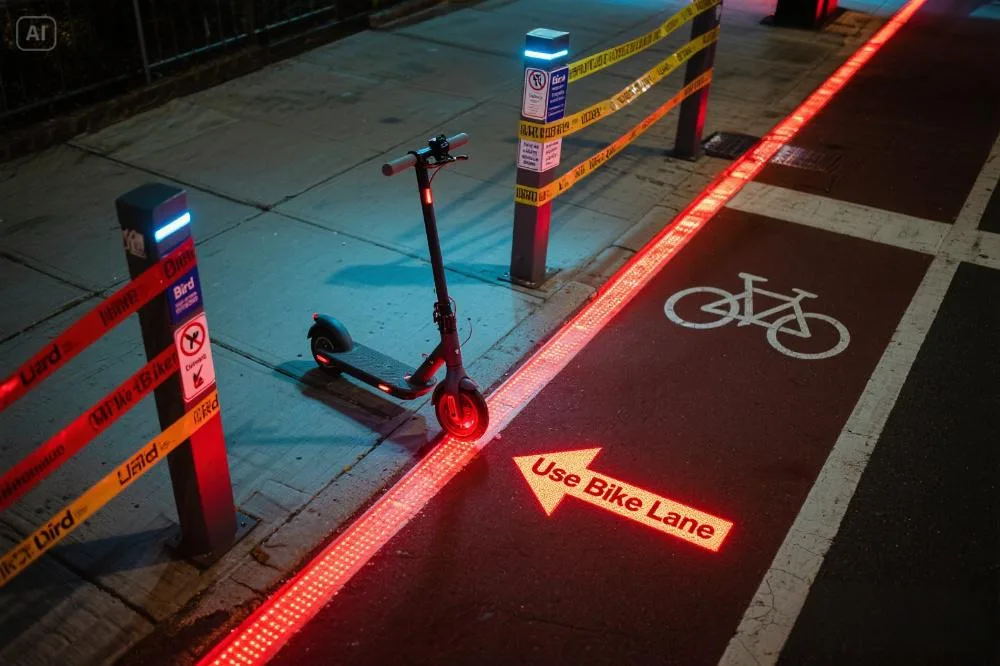- NovaScooter: Revolutionize Your Daily Commute with Smart, Sustainable Speed
- WhatsApp:+8618050955510
Electric scooters like Bird have become a common sight in cities across Europe and North America, but the question of whether you can ride them on sidewalks remains a major point of confusion. Based on 2025 traffic laws, this guide breaks down sidewalk riding rules by region, explains safety risks, and offers legal alternatives. According to the European Micromobility Alliance’s 2025 report, over 60% of e-scooter accidents occur on sidewalks, prompting stricter regulations worldwide. Drawing from real user experiences shared on Novascooter, we’ll cover legal restrictions, enforcement trends, and smart riding strategies to keep you compliant and safe.

1. Sidewalk Riding Laws by Region
Europe’s Varied Rules
The EU’s 2025 Micromobility Framework shows significant differences in sidewalk policies:
- Berlin, Germany: Strictly prohibited (€60 fine)
- Paris, France: Allowed in shared zones at ≤6 km/h (3.7 mph)
- Barcelona, Spain: Permitted with pedestrian priority (banned during rush hours)
- London, UK: Borough-dependent (e.g., Westminster bans it entirely)
Germany’s Transport Ministry reported 12,000+ sidewalk-riding fines in Q1 2025 alone.
North America’s Approach
- Canada (Vancouver): Piloting “slow-ride zones” (max 10 km/h)
- U.S. (California): Classified as a misdemeanor under 2024 updates
2. Why Most Cities Ban Sidewalk Riding?
Safety Risks Backed by Data
- Collision danger: Pedestrians need 1.5 seconds to react—too slow for 15 km/h scooters.
- Injury rates: UK NHS data shows sidewalk crashes cause 3× more severe injuries than bike-lane accidents.
- Blind spots: 43% of crashes happen near building corners (EuroRAP 2025).
Improved Infrastructure
Cities are adding dedicated lanes:
- Paris: 150 km of new protected paths
- Amsterdam: Dual-use canalside routes
- Copenhagen: Glow-in-the-dark trial lanes
Novascooter users found these lanes cut commute times by 20% vs. sidewalk riding.
3. How to Ride Legally & Safely
1. Use Alternative Routes
- Activate Safe Routes in Bird’s app
- Enable e-scooter mode on Google Maps
- Check city micromobility maps (e.g., London’s Scooter Streets)
2. Handling Exceptions
If you must briefly use a sidewalk:
- Slow to walking speed (≤5 km/h)
- Use the bell/voice alert early
- Dismount in crowded areas
- Avoid accelerating near blind corners
3. Tech Assistance
2025 Bird scooters include:
- Auto-slowdown in pedestrian zones (GPS-based)
- Pedestrian detection alerts
- Violation tracking (affects rider scores)
4. Penalties for Sidewalk Riding
Fines Across Major Cities
| City | First Offense | Repeat Offense |
|---|---|---|
| Berlin | €60 | €200+ impound |
| Paris | €35 | €135 |
| Toronto | CAD$125 | CAD$500 |
| Sydney | AUD$344 | AUD$689 |
Insurance Impacts
2025 policy updates:
- No coverage for sidewalk accidents
- 30-50% premium hikes after violations
- Liability risks for pedestrian injuries
5. Safety Tips for Pedestrians
- Watch for silent scooters: Despite 55 dB minimum sound rules, some modified scooters run quietly.
- Avoid parking hazards: 17% of Bird parking blocks tactile paving (Novascooter survey).
- Report reckless riding: Most city apps now have real-time reporting.
6. Future Regulation Trends
- Dynamic no-ride zones: Expanding e-fencing by 2026
- Rider scoring systems: Repeated violations may suspend accounts
- Standardized alert sounds: EU-wide acoustic rules in development
As discussed on Novascooter, evolving laws and tech will gradually reduce sidewalk conflicts. Riders should check local updates—12 cities adjusted policies quarterly in 2025.
Final Verdict
While sidewalk riding might seem convenient, it’s often illegal and unsafe. Sticking to bike lanes, obeying local laws, and using Bird’s safety features ensure responsible riding in 2025. Next time you unlock a scooter, take 30 seconds to plan your route—it protects pedestrians and your wallet.
Online Message
© 2025. All Rights Reserved.








